Latro
Arcane
Can this run on Win 7 32 bit?



Can this run on Win 7 32 bit?

He already mentioned that probably will be dlc. I don't care much about naval part (although I'd imagine it would open possibility of generating planets with far larger water % and islands) I've got Rule The Waves for that particular fix but air units is definitely something I'd want.
He basically said, that in turn based games simulating air is tricky to begin with. On top of that, he wanted air to be affected by planetary features - like ground units in SE already are - and considering different gravity, atmosphere, etc., there are a lot of coinciding factors that he does not want to exclude and develop something half arsedHe already mentioned that probably will be dlc. I don't care much about naval part (although I'd imagine it would open possibility of generating planets with far larger water % and islands) I've got Rule The Waves for that particular fix but air units is definitely something I'd want.
Well, it's quite obvious that the game is missing those two type of units. I don't need it fleshed out as well as ground combat already is, but it would be nice to have them.
I guess it's also one of the reasons that there are no planets with large bodies of water.

Didn't it work just fine in Advanced Tactics Gold and operational Art of War?He basically said, that in turn based games simulating air is tricky to begin with. On top of that, he wanted air to be affected by planetary features - like ground units in SE already are - and considering different gravity, atmosphere, etc., there are a lot of coinciding factors that he does not want to exclude and develop something half arsedHe already mentioned that probably will be dlc. I don't care much about naval part (although I'd imagine it would open possibility of generating planets with far larger water % and islands) I've got Rule The Waves for that particular fix but air units is definitely something I'd want.
Well, it's quite obvious that the game is missing those two type of units. I don't need it fleshed out as well as ground combat already is, but it would be nice to have them.
I guess it's also one of the reasons that there are no planets with large bodies of water.
ATG Lesson 6 : Aircraft
Posted on June 20, 2011 by vic
Welcome back to Advanced Tactics Gold college! Its going to be an important lesson today. So far we have only been looking into ground troop types. Today we will discuss the air theater. There are three good reasons to create an airforce. First of all: Creating an airforce will give you the same sort of power as artillery, but with extreme range and mobility. Secondly: possession of an airforce will allow you to use a number of special orders like para dropping and air recon. And thirdly: an airforce is the best form of air defense if your fighting an enemy with its own airforce.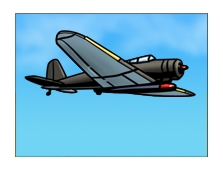
The most important aircraft types are the fighter, the dive bomber and the level bomber. Our main focus in this lesson will be on them. At the end of the lesson I will also briefly discuss the more specialized types: the transporter, the strategic bomber, the carrier fighter,the torpedo bomber and the kamikaze fighter.
In a non-stone age game the fighter, dive bomber, level bomber and transporter will be available for production immediately, the other aircraft types require research before being available for production.
Lets start with looking at level bombers. Level bombers cost only 1250 production points to produce, compared to 2000 production points or more for most other aircraft types. The level bombers is the aircraft type that is most efficient against infantry. Using 5 level bombers versus 100 infantry with entrenchment level 125 will still cause 6 deads and 10% readiness drop. For comparison: 5 divebombers would kill only 4 infantry and 5 fighters only 2 infantry. Level bombers also have some capability to do structural dammage and can be used to bomb towns or bridges. However i advise using strategic bombers for that purpose instead.
Those level bomber combat results might not be a very convincing argument for building an airforce. But keep in mind that infantry the troop type that is most resilient when faced with air attack. If we look at the dive bomber we will start to see some real power. for example: 5 dive bombers attacking 5 light tanks or 5 anti-tank guns will kill half of them and cause over 50% readiness to the remainder.
Keep in mind it is the big equipment like artillery and tanks that are really vulnerable to your airforce. The weapon of choice to take out these prime targets is the dive bomber. You can use other aircraft types, but they wont perform as well: when attacking the same target as the dive bombers in the previous example 5 level bombers would maybe just kill 1 light tank on average and 5 fighters would have to be really lucky to kill even that one tank.
Heavier tanks become harder and harder to kill for lighter tanks, but the effect is not linear for aircraft. The heavier the tank becomes the relatively (production point wise) better the odds become for dive bombers to take them out.
The dive bomber can have tremendous impact in stopping an enemy blitzkrieg style offensive. Because at some moment the enemy panzers will have advanced beyond their air umbrella, at that point you should strike the enemy spearheads with your dive bomber squadrons and blunt his offensive power.
When attacking ground targets aircraft suffer penalties from -50% to -75% when attacking the enemy in rugged terrain like forests, mountains and urban. The worst ground target an airforce can thus face is infantry in jungle or mountains. (sounds familiar?) Also enemy flak might become a real issue in rugged terrain.
Unless the enemy has no airforce, the fighter should be used to take out enemy aircraft, escort your bombers and not to attack enemy ground units all by it self. If enemy fighters are on intercept you can lure them into combat by attacking a ground unit close to their airfields. Defending fighters always have a small advantage when dog fighting. Best way to take them out is to attack the enemy on its own airfields. If you do so you will get a surprise bonus that will at least negate the natural defensive fighter advantage. Furthermore when attacking the enemy on its own airfields you can bring your level and dive bombers, they will then take out any enemy bombers present on the enemy airfields. The rather cheap level bomber is perfect for this job.
To defend your own troops from enemy air strikes you must make sure fighter units are close enough to the front and instructed to intercept. Your intercept setting can best be put at 75% readiness. This will avoid your fighters going into combat on low readiness and taking big hits. In case you have completely no air superiority you might even choose to set intercept setting to „don’t“ and first build up an airforce of some size before confronting your opponent. Intercept range of your aircraft is half their normal attack range modified with their readiness percentage. Keep in mind that intercept is never assured, at the edge of the intercept range of your aircraft it is only 50% chance for intercept.
If fighting for air superiority try to maximize the attack with up to two times as much fighters as the defender can bring up. Numbers count!
If your enemies are capable of doing a lot of air strikes it is important to build airfields close to the front line to ensure intercept cover, as well as keeping some flak with spearhead formations, that might outrun your air umbrella.
With the release of ATG v2.06 a new airfield stacking rule is also in effect. What this rule basically does is limit the amount of aircraft that can operate from the same air base or city without penalties. Once you overstack an airfield a green colored negative percentage will become visible on top of your aircraft illustrations. This percentage is the penalty these aircraft will suffer when doing battle, either in defending their own air base, intercepting or attacking an enemy hex. Keep in mind fighters are only 5 stack points, while level and dive bombers are 10. Airfields and regular cities can hold 100 air stack points, capitols 200. Since this is a relatively new rule it might very well still be fine tuned in upcoming patches.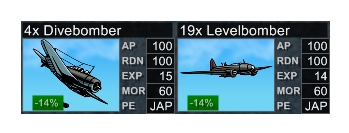
Not only is there a penalty if you have to many aircraft on the same runway, also there is a penalty if you attack with to many aircraft on the same hex. This is called air battlestack and works the same as artillery and land battlestack. Basically there are only so many aircraft that can effectively attack the same hex in one round.
In previous lessons it was often emphasized that blitzkrieg style offensives are the way to go. Last lesson advised combining artillery and tanks. This lesson recommends you to also use aircraft. First strike the hex with artillery and air and only then commence your land attack. This combined arms approach will give you great results and will allow you to maximize firepower on a hex like never before.
Another advantage with having an airforce is the option to do air recon and finally check out the situation behind the front line. This way you can see enemy offensives coming! Use fighters in this role since they have the best recon scores.
Transporter aircraft can be used for a number of purposes. First of all to paradrop paratroopers. If an enemy has not defended in depth this can be a great strategy to use, and when used in conjunction with a blitzkrieg offensive will make it much easier to ensure the encirclement. Use the paratroopers to capture bridge hexes and vital road junctions or drop them exactly at the point where you expect your panzer pincer movements to meet up. But transporter aircraft can also airlift non-paratrooper units. This is an excellent alternative to strategic transfer. Furthermore transporters can also be used to do air supply drops. This can be the only way for you to keep encircled troops alive!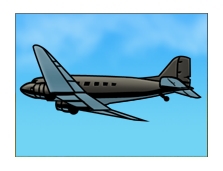
Then there are torpedo bombers and carrier fighters, both take only half the room on board of an aircraft carrier then regular aircraft. This is a big plus in itself when fighting on the high seas since it allows you to bring double the amount of aircraft with your carriers. Furthermore torpedo bombers will perform much better against naval targets then other aircraft. If however you do not have torpedo bombers use dive bombers against enemy naval units. When attacking enemy naval units keep in mind cruisers have excellent flak and should optimally only be attacked by torpedo bombers. Also keep in mind that submarines are especially vulnerable to airstrike.
The Kamikaze is only available to the Japanese. Since the Kamikaze blows itself up in the first combat round it has a good chance to hit a target before being killed by enemy aircraft or flak. Basically the kamikaze is only interesting if you want to do some damage to enemy surface vessels but no longer have the power to build an airforce that is on par with that of the enemy. Admittedly it is a weapon thats mainly useful in desperate defense or in some sort of shock-doctrine were you really need to take out that enemy naval unit.
Last but not least there is the strategic bomber. Its slightly expensive, but it does 4 times as much structural damage as the the level bomber and has much better range. If you can bomb and reduce your enemy his towns, mines and oil wells to 0 structural points, he will have no production capacity and you will be able to bring him on his knees without doing any major fighting.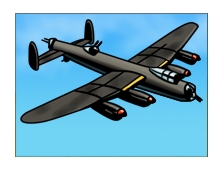
The trick in using air power wisely is to have a balanced air force. Have enough fighters to protect your airspace and if possible attain air superiority… Have some dive bombers to strike at enemy armored spearheads were necessary… Keep some transporter units and paratroopers ready for when an opportunity opens up to take a key bridge behind enemy lines… Keep some strategic bombers ready, just in case you can strike an unprotected enemy oil well. Having a diverse airforce at the ready gives you striking power, operational flexibility and forces the enemy to build its own airforce, keep more garrisons and build flak on key production sites.
Didn't it work just fine in Advanced Tactics Gold and operational Art of War?He basically said, that in turn based games simulating air is tricky to begin with. On top of that, he wanted air to be affected by planetary features - like ground units in SE already are - and considering different gravity, atmosphere, etc., there are a lot of coinciding factors that he does not want to exclude and develop something half arsedHe already mentioned that probably will be dlc. I don't care much about naval part (although I'd imagine it would open possibility of generating planets with far larger water % and islands) I've got Rule The Waves for that particular fix but air units is definitely something I'd want.
Well, it's quite obvious that the game is missing those two type of units. I don't need it fleshed out as well as ground combat already is, but it would be nice to have them.
I guess it's also one of the reasons that there are no planets with large bodies of water.
https://www.vrdesigns.net/?p=218
ATG Lesson 6 : Aircraft
Posted on June 20, 2011 by vic
Welcome back to Advanced Tactics Gold college! Its going to be an important lesson today. So far we have only been looking into ground troop types. Today we will discuss the air theater. There are three good reasons to create an airforce. First of all: Creating an airforce will give you the same sort of power as artillery, but with extreme range and mobility. Secondly: possession of an airforce will allow you to use a number of special orders like para dropping and air recon. And thirdly: an airforce is the best form of air defense if your fighting an enemy with its own airforce.
The most important aircraft types are the fighter, the dive bomber and the level bomber. Our main focus in this lesson will be on them. At the end of the lesson I will also briefly discuss the more specialized types: the transporter, the strategic bomber, the carrier fighter,the torpedo bomber and the kamikaze fighter.
In a non-stone age game the fighter, dive bomber, level bomber and transporter will be available for production immediately, the other aircraft types require research before being available for production.
Lets start with looking at level bombers. Level bombers cost only 1250 production points to produce, compared to 2000 production points or more for most other aircraft types. The level bombers is the aircraft type that is most efficient against infantry. Using 5 level bombers versus 100 infantry with entrenchment level 125 will still cause 6 deads and 10% readiness drop. For comparison: 5 divebombers would kill only 4 infantry and 5 fighters only 2 infantry. Level bombers also have some capability to do structural dammage and can be used to bomb towns or bridges. However i advise using strategic bombers for that purpose instead.
Those level bomber combat results might not be a very convincing argument for building an airforce. But keep in mind that infantry the troop type that is most resilient when faced with air attack. If we look at the dive bomber we will start to see some real power. for example: 5 dive bombers attacking 5 light tanks or 5 anti-tank guns will kill half of them and cause over 50% readiness to the remainder.
Keep in mind it is the big equipment like artillery and tanks that are really vulnerable to your airforce. The weapon of choice to take out these prime targets is the dive bomber. You can use other aircraft types, but they wont perform as well: when attacking the same target as the dive bombers in the previous example 5 level bombers would maybe just kill 1 light tank on average and 5 fighters would have to be really lucky to kill even that one tank.
Heavier tanks become harder and harder to kill for lighter tanks, but the effect is not linear for aircraft. The heavier the tank becomes the relatively (production point wise) better the odds become for dive bombers to take them out.
The dive bomber can have tremendous impact in stopping an enemy blitzkrieg style offensive. Because at some moment the enemy panzers will have advanced beyond their air umbrella, at that point you should strike the enemy spearheads with your dive bomber squadrons and blunt his offensive power.
When attacking ground targets aircraft suffer penalties from -50% to -75% when attacking the enemy in rugged terrain like forests, mountains and urban. The worst ground target an airforce can thus face is infantry in jungle or mountains. (sounds familiar?) Also enemy flak might become a real issue in rugged terrain.
Unless the enemy has no airforce, the fighter should be used to take out enemy aircraft, escort your bombers and not to attack enemy ground units all by it self. If enemy fighters are on intercept you can lure them into combat by attacking a ground unit close to their airfields. Defending fighters always have a small advantage when dog fighting. Best way to take them out is to attack the enemy on its own airfields. If you do so you will get a surprise bonus that will at least negate the natural defensive fighter advantage. Furthermore when attacking the enemy on its own airfields you can bring your level and dive bombers, they will then take out any enemy bombers present on the enemy airfields. The rather cheap level bomber is perfect for this job.
To defend your own troops from enemy air strikes you must make sure fighter units are close enough to the front and instructed to intercept. Your intercept setting can best be put at 75% readiness. This will avoid your fighters going into combat on low readiness and taking big hits. In case you have completely no air superiority you might even choose to set intercept setting to „don’t“ and first build up an airforce of some size before confronting your opponent. Intercept range of your aircraft is half their normal attack range modified with their readiness percentage. Keep in mind that intercept is never assured, at the edge of the intercept range of your aircraft it is only 50% chance for intercept.
If fighting for air superiority try to maximize the attack with up to two times as much fighters as the defender can bring up. Numbers count!
If your enemies are capable of doing a lot of air strikes it is important to build airfields close to the front line to ensure intercept cover, as well as keeping some flak with spearhead formations, that might outrun your air umbrella.
With the release of ATG v2.06 a new airfield stacking rule is also in effect. What this rule basically does is limit the amount of aircraft that can operate from the same air base or city without penalties. Once you overstack an airfield a green colored negative percentage will become visible on top of your aircraft illustrations. This percentage is the penalty these aircraft will suffer when doing battle, either in defending their own air base, intercepting or attacking an enemy hex. Keep in mind fighters are only 5 stack points, while level and dive bombers are 10. Airfields and regular cities can hold 100 air stack points, capitols 200. Since this is a relatively new rule it might very well still be fine tuned in upcoming patches.
Not only is there a penalty if you have to many aircraft on the same runway, also there is a penalty if you attack with to many aircraft on the same hex. This is called air battlestack and works the same as artillery and land battlestack. Basically there are only so many aircraft that can effectively attack the same hex in one round.
In previous lessons it was often emphasized that blitzkrieg style offensives are the way to go. Last lesson advised combining artillery and tanks. This lesson recommends you to also use aircraft. First strike the hex with artillery and air and only then commence your land attack. This combined arms approach will give you great results and will allow you to maximize firepower on a hex like never before.
Another advantage with having an airforce is the option to do air recon and finally check out the situation behind the front line. This way you can see enemy offensives coming! Use fighters in this role since they have the best recon scores.
Transporter aircraft can be used for a number of purposes. First of all to paradrop paratroopers. If an enemy has not defended in depth this can be a great strategy to use, and when used in conjunction with a blitzkrieg offensive will make it much easier to ensure the encirclement. Use the paratroopers to capture bridge hexes and vital road junctions or drop them exactly at the point where you expect your panzer pincer movements to meet up. But transporter aircraft can also airlift non-paratrooper units. This is an excellent alternative to strategic transfer. Furthermore transporters can also be used to do air supply drops. This can be the only way for you to keep encircled troops alive!
Then there are torpedo bombers and carrier fighters, both take only half the room on board of an aircraft carrier then regular aircraft. This is a big plus in itself when fighting on the high seas since it allows you to bring double the amount of aircraft with your carriers. Furthermore torpedo bombers will perform much better against naval targets then other aircraft. If however you do not have torpedo bombers use dive bombers against enemy naval units. When attacking enemy naval units keep in mind cruisers have excellent flak and should optimally only be attacked by torpedo bombers. Also keep in mind that submarines are especially vulnerable to airstrike.
The Kamikaze is only available to the Japanese. Since the Kamikaze blows itself up in the first combat round it has a good chance to hit a target before being killed by enemy aircraft or flak. Basically the kamikaze is only interesting if you want to do some damage to enemy surface vessels but no longer have the power to build an airforce that is on par with that of the enemy. Admittedly it is a weapon thats mainly useful in desperate defense or in some sort of shock-doctrine were you really need to take out that enemy naval unit.
Last but not least there is the strategic bomber. Its slightly expensive, but it does 4 times as much structural damage as the the level bomber and has much better range. If you can bomb and reduce your enemy his towns, mines and oil wells to 0 structural points, he will have no production capacity and you will be able to bring him on his knees without doing any major fighting.
The trick in using air power wisely is to have a balanced air force. Have enough fighters to protect your airspace and if possible attain air superiority… Have some dive bombers to strike at enemy armored spearheads were necessary… Keep some transporter units and paratroopers ready for when an opportunity opens up to take a key bridge behind enemy lines… Keep some strategic bombers ready, just in case you can strike an unprotected enemy oil well. Having a diverse airforce at the ready gives you striking power, operational flexibility and forces the enemy to build its own airforce, keep more garrisons and build flak on key production sites.
On the other hand, naval combat in land games is usually pretty bad. I don't remember any hex land wargame with good naval combat (World in Flames has cool naval combat, but it doesn't use hexagons at all, unlike Ground combat. It uses separate "sea areas").
World at War: a World Divided also has nice air naval combat, but everything is relatively abstracted, and the areas are quite huge(also, the ground combat is not super convincing, given the size of the regions, it is mostly about having more units than the opponent).

Is there a correlation between how abundant the resources are depending on difficulty level or are there sliders for these things?One would think that on a post-apocalyptic lifeless ball of rock with rivers of lava, toxic atmosphere and mean temperature of 100 degrees celsius it should be non-trivial to get enough food, water and oxygen to survive, never mind to field and army, yet gameplay-wise its almost the same as earth-like planet.
They depend on planet generation, not difficulty.
Each city gets a private farm with a fixed amount of food per turn. I think its something like 200 food with 0,01 per human, so enough for 20000 people. It usually stops being enough on turn 10 or so, to get more you need water and energy(if it not open-air farm). The amount of rain can easily be ajdusted during planet generation, though even with 0 its easy to survive as you always get one "water deposit" hex near the capital, not sure if amount of water is fixed or no.
No such resource as oxygen unortunately, but atmosphere mix also depends on planet generation. Would have been cool if, in case of non-earth like atmosphere, it would have been required to produce oxygen from water or from farming domes and\or get it directly from atmosphere with some kind of filtration station, the effectivenes of which would have depended on the percentage of oxygen in the atmosphere.
Also the number of oil, ice, regular metal and rare metal deposits possibly also depends on mining economy percentage during the colonisation phase of planet generation, didn't test it though. Probably will try a game with 0% mining economy next. Ruins with recycling station also produce regular metal, oil and rare metal. Not sure how to adjust the numer of these. Possibly re-roll until the palnet is barely colonized before the dissolution war.
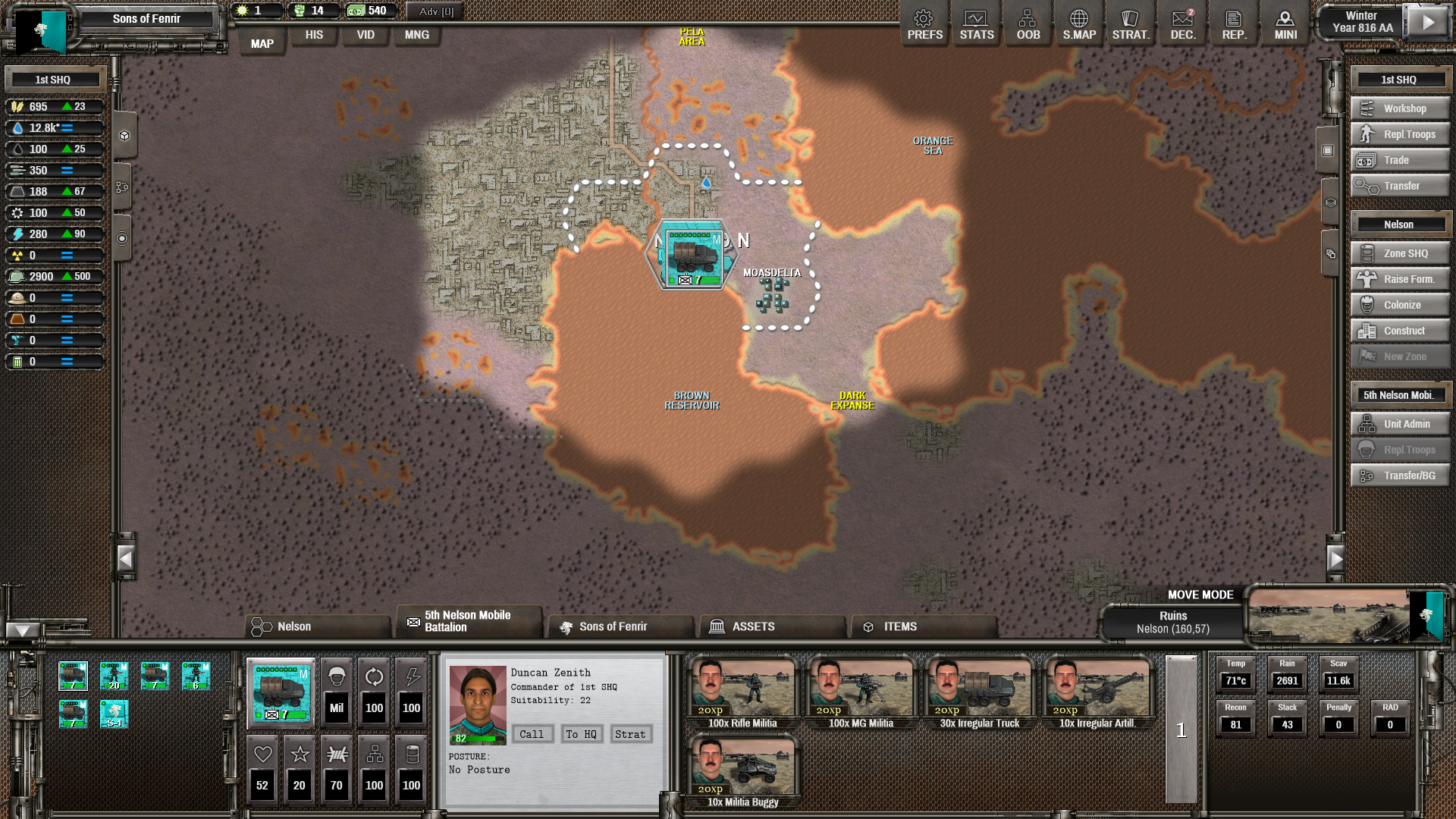
Didn't it work just fine in Advanced Tactics Gold and operational Art of War?
https://www.vrdesigns.net/?p=218
On the other hand, naval combat in land games is usually pretty bad. I don't remember any hex land wargame with good naval combat (World in Flames has cool naval combat, but it doesn't use hexagons at all, unlike Ground combat. It uses separate "sea areas").
World at War: a World Divided also has nice air naval combat, but everything is relatively abstracted, and the areas are quite huge(also, the ground combat is not super convincing, given the size of the regions, it is mostly about having more units than the opponent).
Played for something like 20 hours or so, found out some stuff that i dislike:
Atmosphere mix & temperature barely seem to matter apart from whether or not its possible to build open air farms(which aren't much better than domed ones). There are lots of various modifiers for troop readiness but apparently they don't apply unless one makes an infantry model without envirosuit (which costs almost nothing). Radiation seems to impact troops more but still the effect was barely noticeable in my games. The manual says it also has some effect on civilian population but why would one build a city in irradiated zone? Didn't notice any effects of gravity too. Humidity is ok i guess, in that its at least possible to have a planet with no rain hence no freely available water, or enough rain for one t2 farm, or enough rain for gazillion farms on earth-like planet, though its kinda too easy to build a t1 ice mine and forget about water shortages for the foreseeable future.
One would think that on a post-apocalyptic lifeless ball of rock with rivers of lava, toxic atmosphere and mean temperature of 100 degrees celsius it should be non-trivial to get enough food, water and oxygen to survive, never mind to field and army, yet gameplay-wise its almost the same as earth-like planet.Though at least the minor regimes on such a planet tend to be raiders, mutants and AI-remnants instead of farmers so less cities for major regimes to capture which is good. On "regular" planets with water i find that game often quickly snowballs in either player's or one of the AI's favor due to minor regimes being too weak. Imo the devs should give them more militia or something.
Otherwise i'm having a blast with the game so far. Haven't seen an economy system like this anywhere else before. Had one match when there was zero metal deposits and no ruins anywhere near me so i was struggling with industrial points (cause industry costs a ton of metal) until the private economy built light industry t1, and then after several private investment cards, t2. And in my current game on lava planet the private dudes have built an ice mine on my starting water hex before i could, bringing enough water for my t2 farm and a ton of income for the private economy due to selling water on the market, which resulted in rapid growth of my civilization level and pop happiness due to all the new buildings in the city. Now its time to raise the taxes.
I don't entirely agree with Your criticisms. Firstly, the temperature does impact troops in a pretty substantial way. In my game infantry has its morale lowered from 90 to around 40s because of the climate - that is major and makes all fighting quite volatile because of it (also gives advantage to the alien fauna that is accustomed to such temperatures). Secondly, it makes sense that the survivors who live on even the most inhospitable planets have equipment neccessary to survive - otherwise it is unlikely any kind of settlement would develop there in the first place. And domed farms have a pretty substantial problem that is they require energy.
Of course expanding on the survival aspects could have potentially been cool, but I guess it would have an adverse effects of rolling You a completely botched starts and AI struggling with another layer of complexity.
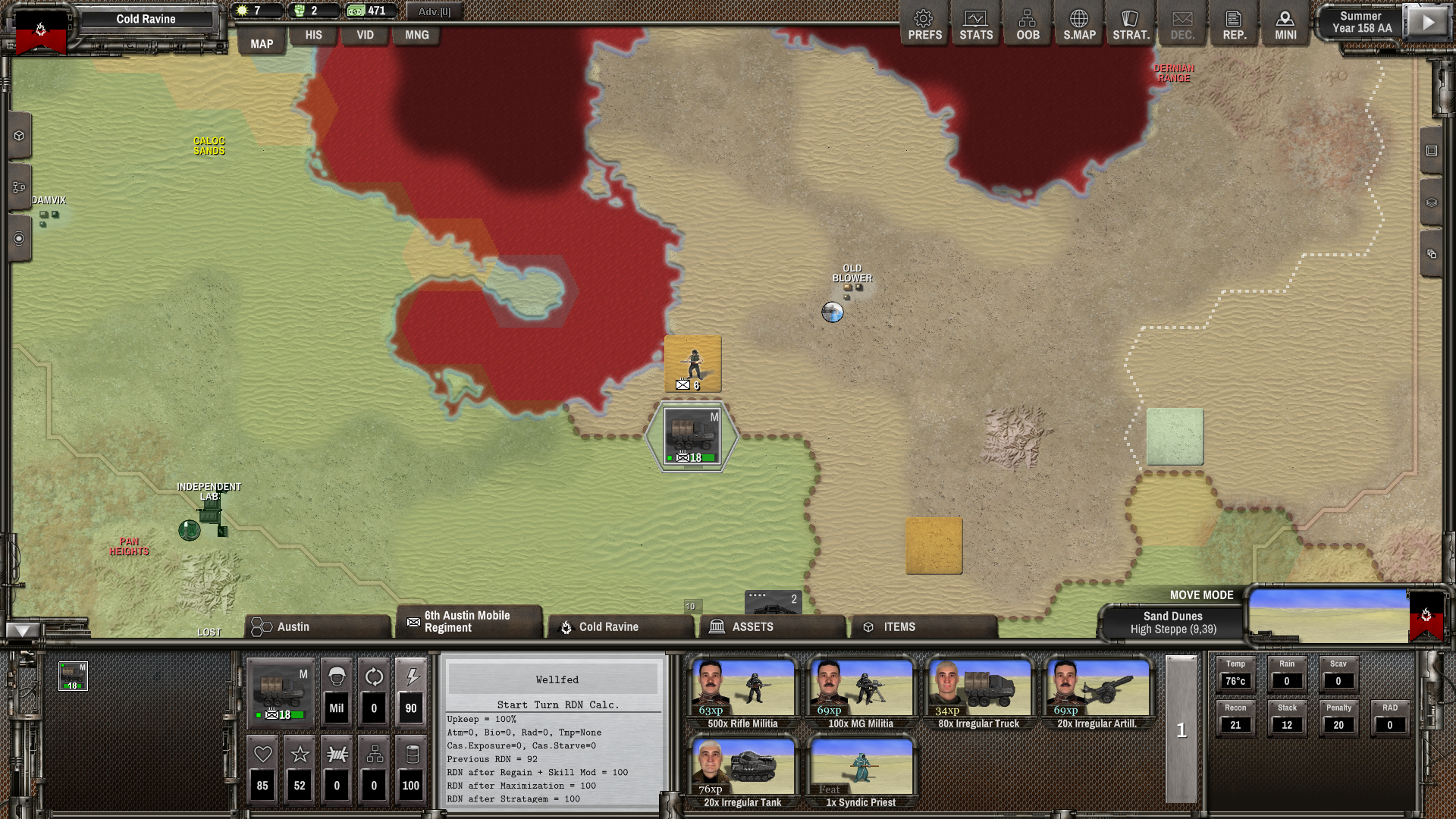
Can this run on Win 7 32 bit?

i would say it's probable, but it'll run sluggishly

I thought I was done with gaming. Turns out, 99,9% are just garbage games.
This game here...this warms my cold heart.
Edit: Any mods that...fix the graphics a little bit? I am in no way a graphics person...but come on, these DAZ models have to go. Even Dwarf Fortress looks better.



I cannot seem to discover the tech to create power, so I'm stuck with the initial 100. Any way to get that power plant tech fast? Increasing the discovery budget of economy council doesn't seem to do anything







